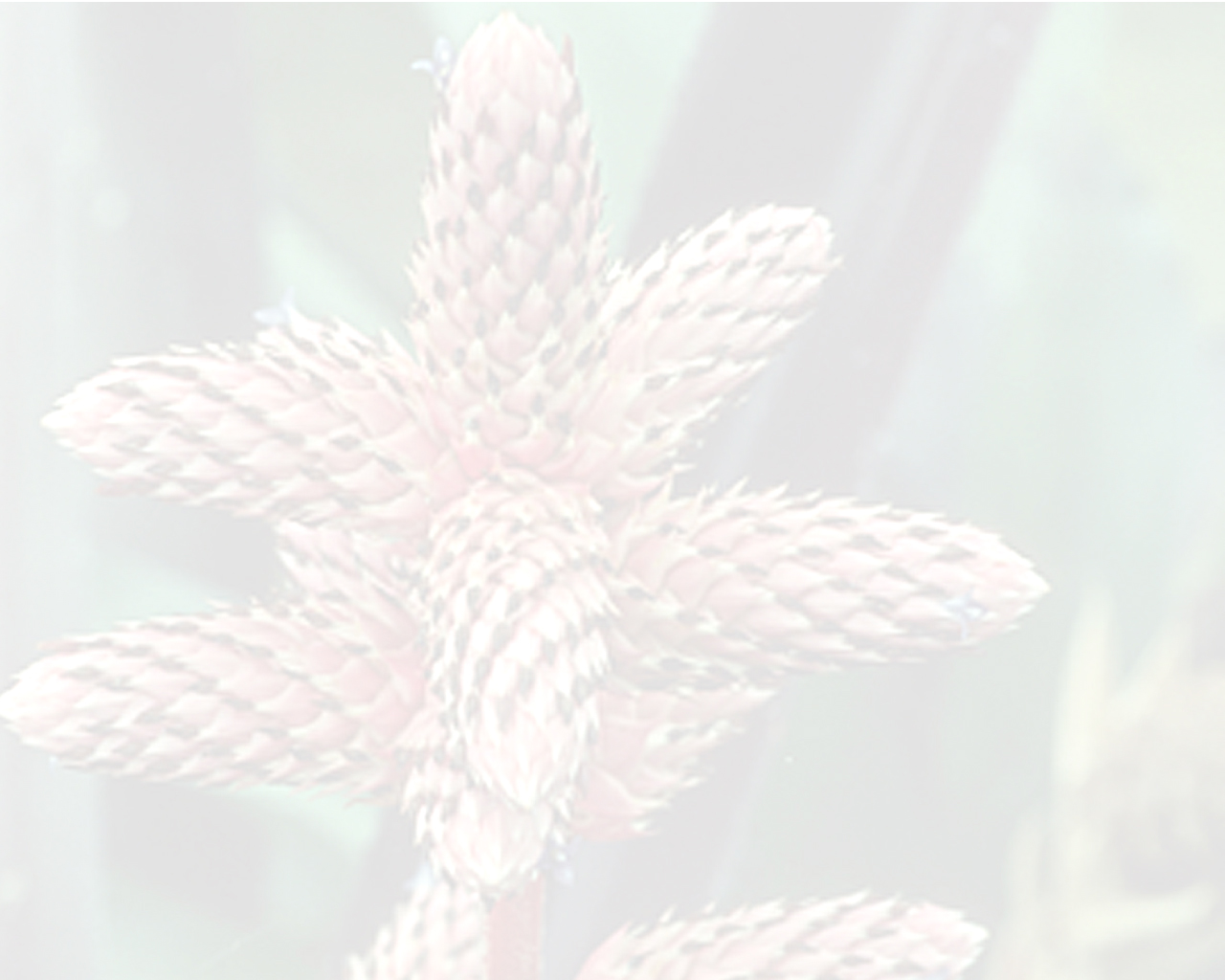

 Hohenbergia catingae var. catingae [as Hohenbergia catingae var. catingae Ule]
Hohenbergia catingae var. catingae [as Hohenbergia catingae var. catingae Ule]Observations: —DISCUSSION
The concept of H. catingae, according to Smith & Downs (1979), was based on Smith & Read (1976) and included five varieties: the type variety, var. elongata M. B. Foster, var. horrida (Harms) L. B. Sm. & Read, var. eximbricata L. B. Sm. & Read and var. extensa L. B. Sm. & Read. Baracho (2003) re-established the original status of var. horrida, as presented below, and proposed that the other varieties of H. catingae be placed in synonymy. He felt that the morphological traits cited for these varieties were contained in the natural variability universe of the type species, H. catingae. However, the presence of similarity does not imply the absence of differences, which suggests a more profound assessment of the above-mentioned varieties. Furthermore, these varieties have other distinguishing traits that were not mentioned explicitly in the respective protologues, a topic that Baracho (2003) did not touch on. This reinforces the need for a more detailed analysis of these taxa, and for this reason, we did not adopt the ample syn¬onymization proposal for the H. catingae varieties.
We included Hohenbergia caruaruensis as a new synonym of the H. catingae type variety, while Smith & Read (1976) and Smith & Downs (1979) treat H. caruaruensis as a synonym of H. catingae var. elongata. Variety elongata is from Bahia and is characterized by the inflorescence with relatively short basal primary branches (when compared to the type variety) and very long, cylindrical floral strobili, as revealed in the photograph that illustrates the proto¬logue (Foster, 1961) and in photographs of the types. These char¬acteristics are not compatible with H. caruaruensis inflorescence structure. On the contrary, as an examination of the isotype (IPA) revealed, the structural pattern of the inflorescence and floral details of this taxon fit more closely the concept of H. catingae var. catingae, whose basal primary branches are long and whose floral strobili are proportionately shorter.
In Rio Grande do Norte (unpublished data) and Alagoas, H. catingae occurs on the coast, mainly in the Restingas, as a terres¬trial heliophyte on the sandy beach ridges. It is also found in Paraiba, Sergipe and Bahia (unpublished data). The plants form dense clusters on granite outcrops in the Agreste of Paraiba and Pernambuco, and on inselbergs in the Brejos de altitude.
At the Raso da Catarina Ecological Station, in Bahia, the pink¬ish-red inflorescence of H. catingae attracts hummingbirds (Chloros¬tilbon aureoventris and Phaethornis gounellei) that pollinate the flowers. On the granite outcrops of Sitio Maria da Serra, in the Bom Con¬selho transition zone, Pernambuco, C. aureoventris has a marked territorial behavior, with frequent visits to clumps of H. catingae.Edited from (30-12-2014): Siqueira & Leme 2007. Fragments of the Atlantic Forest of Northeast Brazil - Biodiversity, Conservation and the Bromeliads .